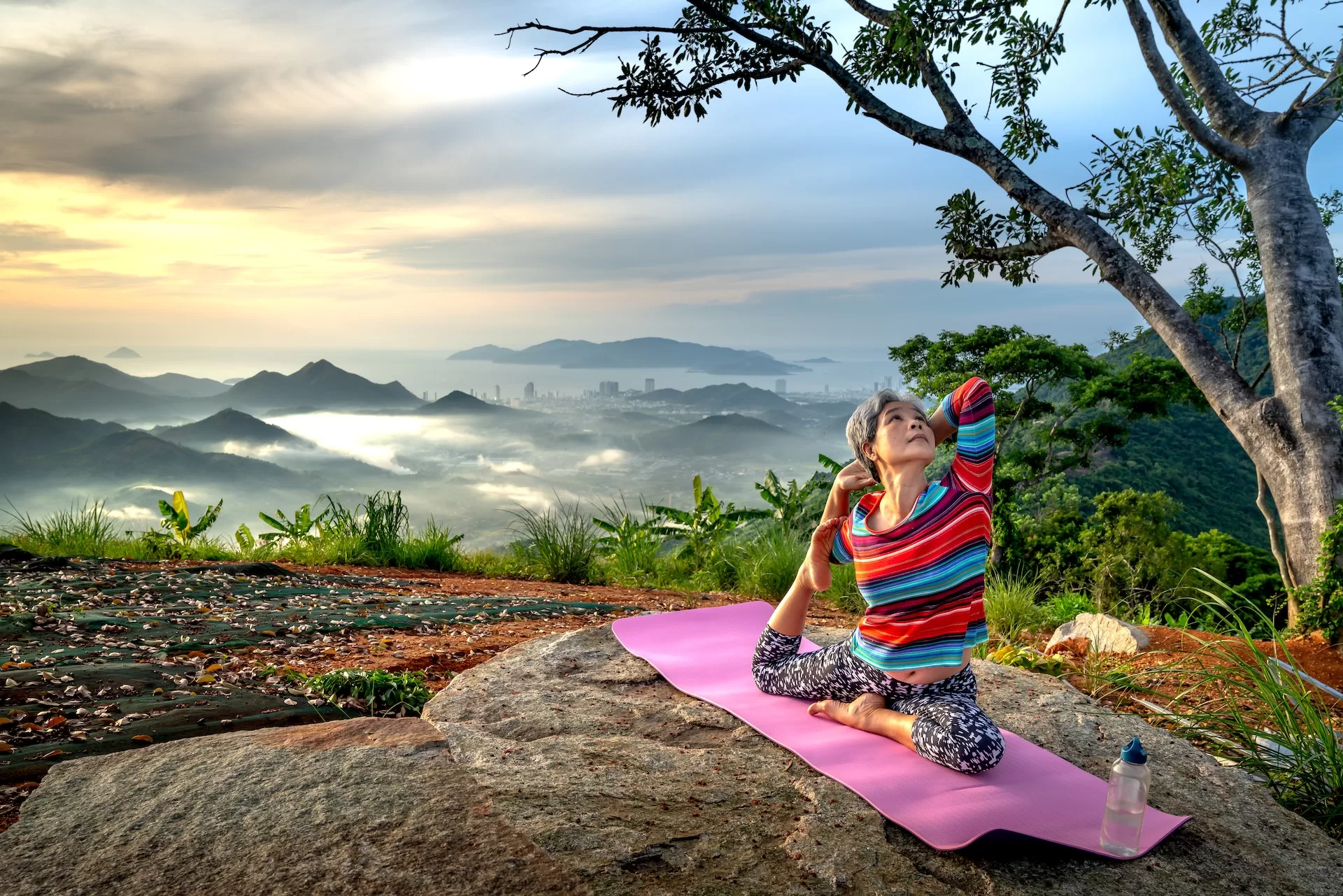Eka Pada Rajakapotasana, commonly known as pigeon pose, is a seated asana in hatha yoga, and in Yin Yoga, is often referred to as a “restorative pose” because of its ability to bring a sense of relaxation and integration to the body.
This pose is considered a basic beginning asana, meaning it can be performed by almost anyone, with or without props, however it offers significant depth and complexity of practice.
This guide aims to offer an expert level exploration of its poses, movement, and techniques.
The Anatomy of Pigeon Pose
Achieving the right level of flexibility to enter into Pigeon pose requires understanding a few key anatomical areas of the body, their alignment and the particular range of motion that each one needs.
First and foremost, hip flexion is at the heart of this pose. This means that the psoas muscle must be able to extend sufficiently to the point of being relatively horizontal, which is the prerequisite for the external rotation of the thigh.
The connection of the front kneecap, or patella, needs to be able to glide efficiently, allowing for deep flexion of the hips. In addition, the rotators of the hips need to be able to externalize and internally rotate the femur respectively, which is essential for creating space in the hip joint and allowing for a full range of motion in this pose.
The Modifications
When it comes to achieving Pigeon pose, safe and effective modifications are the key to success. For those with tight hamstrings, the first step is to make sure the knee is bent and that the ankle is flipped outwards. This will help to stretch the hamstrings and ensure a full hip flexion.
As we work towards the position, using block to place the bent leg upon will help to support the lower back and allow the hips to relax further.
Additionally, extending the arms forward while working into the pose will help open up the front of the chest, allowing for more freedom and stability.
Finally, paying close attention to the alignment of the body will ensure maximum benefit and safety. The front bent leg should ultimately be at a 90-degree angle, and the arms should always be diagonal when transitioning.
Also, always remember to actively engage the core, as this will help to stabilize the spine and prevent any unnecessary strain.
Variations
For further modifications, there are several variations that can be used to achieve a greater degree of mobility and comfort. For example, instead of having the bent knee purely horizontal, it can be turned slightly inwards, and then lower the knee down onto the floor. This will allow a greater range of motion while still being supported, and can also help to deepen the stretch of the hip and groin muscles.
In addition to this, the knee can be stacked upon a bolster, which will help to align the lower back more efficiently and increase the range of motion more quickly, if moving from down dog.
The Benefits of Eka Pada Rajakapotasana
The physical benefits of Eka Pada Rajakapotasana are numerous and impressive. Regular practice of this pose can release tightness in muscles, ligaments, and joints, and promote the lengthening of both the spine and the neck. It can also reduce backache and improve the health of the hips and sciatic nerve.
In addition, it can help to improve circulation and regulate appetite. On an energetic level, this posture has a calming effect and helps to restore balance in the body. It promotes a state of inner peace, allowing for increased concentration and for more clarity of thought.
Lastly, it can also help to improve flexibility, resilience, and even our immune system.
Maximising Engagement in Eka Pada Rajakapotasana
When exploring the depths of Eka Pada Rajakapotasana, there are a few techniques that can be used to maximise engagement. These techniques will help to facilitate a deeper and more relaxed insertion into the pose, as well as help to prevent injury and promote relaxation.
The most important aspect of this pose is to ensure a steady and comfortable grounding of the entire body, while engaging the correct muscle groups.
For this, a series of deep, steady breaths will help to encourage the nerological system to rest.
Externally, there should be an emphasis on the use of props, such as blankets and bolsters, which can be used to both reduce any strain on the body and to provide stability throughout the pose.
On an internal level, visualisation can be used to enhance the experience. When the body is properly grounded and relaxed, the mind can be focused on the inner core of energy that the pose is aiding in stabilisation.
The intention should be present throughout the entirety of the practice. At the end of the practice, it is important to release from the pose with a focus on the balanced state that was achieved so that the mental benefits are experienced as well.
Conclusion
Eka Pada Rajakapotasana is a powerful restorative asana that requires a steady practice and a proper understanding of the anatomy of the pose in order to gain the full benefits. It is important to be aware of the physical and energetic effects that this posture can have on the body. With the correct alignment and engagement of muscle groups, proper use of props, and focus on the breath, the experience of this pose can lead to increased flexibility, balance, and inner peace.

